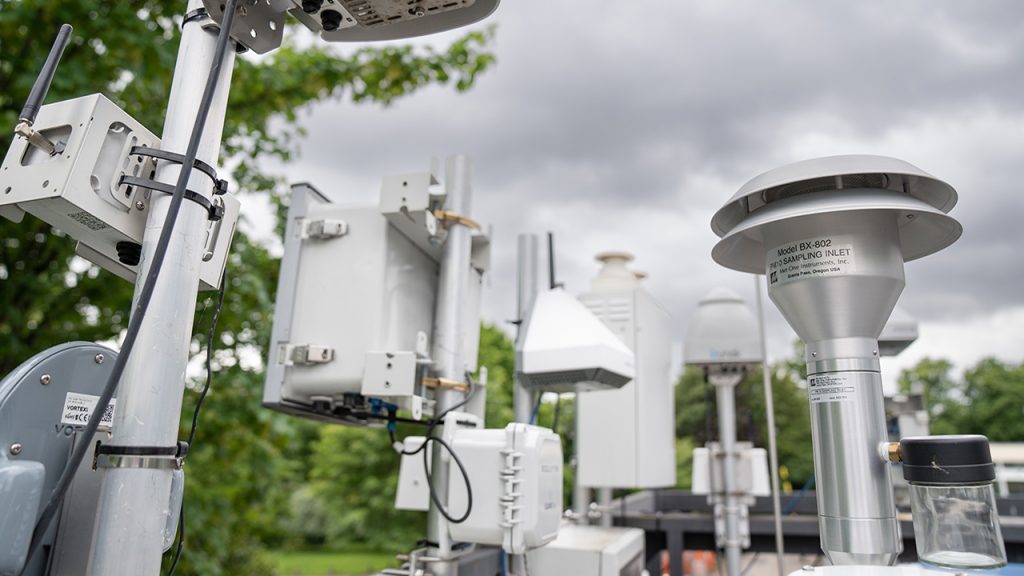
National Centre for Atmospheric Science informs air quality briefing for MPs
The National Centre for Atmospheric Science has provided vital input to a recent House of Commons Library research briefing for MPs on air quality in the UK.
Published earlier last week, the research briefing “Air quality: policies, proposals and concerns” covers evolving air quality policies and legislation across the UK, targets, statistics and health and inequality concerns.
Poor air quality is considered by the government to be the largest environmental risk to public health in the UK. As well as human health, air pollution also has implications for the natural environment and for the economy.
The House of Commons Library provides a range of politically impartial research and information services – often seeking support from UK-based researchers and their published work – for MPs and MPs’ staff to help them scrutinise legislation, prepare for debates, develop policies and support their constituents.
The latest briefing on UK air quality for MPs includes data and scientific insight from researchers at the National Centre for Atmospheric (NCAS) about how air pollution levels fell across the UK during Covid-19 related lockdowns, and how the most deprived areas in England are linked with the highest levels of air pollution.
NCAS’ atmospheric chemists outlined in the briefing how air pollution levels during the winter lockdown in early 2021 fell, but not as far as during the first lockdown in spring 2020. Nitrogen dioxide levels dropped by around 28% between January and March in 2021, and by comparison, nitrogen dioxide levels fell by around 52% between March and May in 2020.
Nitrogen dioxide is a pollutant that, in urban areas, is primarily caused by vehicles. Despite both lockdowns having a similar impact on transport, levels of nitrogen dioxide remained higher throughout the winter period of 2021. NCAS scientists believe that the disparity is likely caused by increasing household heating emissions in winter – due to people working from home – and higher exhaust emissions from cars running in colder conditions.
Dr Will Drysdale, NCAS research scientist at the University of York’s Wolfson Atmospheric Chemistry Laboratory, says the key difference between each lockdown is the change in weather: “Colder temperatures influence our activities, which in turn lead to higher emissions. This seems to have muted the reduction in air pollution over the winter lockdown.”
In the briefing, NCAS’ air quality research team also highlighted a link between the most deprived areas in England, in both cities and countryside, and the highest levels of air pollution. Deprivation-based inequality was found across all major nitrogen oxide emission sources, such as transport, domestic and commercial heating, factories and power plants. This shows that sources of nitrogen dioxide beyond road transport, are also important drivers of air pollution inequality.
Nathan Gray, a PhD researcher at the Wolfson Atmospheric Chemistry Laboratories at the University of York who carried out this research with NCAS, said: “It is often assumed that people living in cities will be exposed to the highest levels of air pollution. Our research shows that while the difference in air pollution between the city and the countryside does drive inequalities, those in more deprived areas will likely have worse air quality regardless of whether they live in the city or more rural areas.”
“People experiencing the highest levels of deprivation often live closest to major roads, and in areas of high housing density. Densely populated areas expose residents to pollutants created by combustion from heating,” explains Dr Sarah Moller, senior research fellow at the National Centre for Atmospheric Science and University of York.
She adds: “Inequalities will persist in the future. Location plays such a large part in determining what emissions people are exposed to, and it is not yet clear how future policy will impact the level of inequality. Some changes should be beneficial, such as reducing nitrogen dioxide concentrations from road vehicles. The future impact of other measures is less certain, for example choices around decarbonisation of domestic heating. Decarbonisation of domestic heating will impact inequalities in exposure – but whether this improves the situation or makes it worse will depend on which technology is chosen, and whether any emissions from alternative fuels are managed effectively.”
